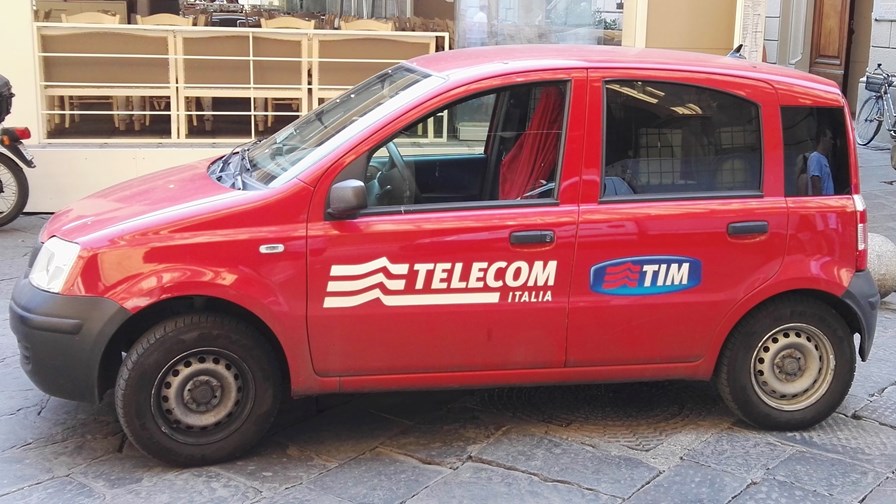
- TIM forges key cloud, AI alliances
- Much of Asia gets its trade act together
- Orange makes plans for windfall
TIM’s pulling power, a trade powerhouse in Asia and Orange’s plans for how to spend a major windfall are the pick of a juicy news bunch.
TIM (Telecom Italia) has teamed up with Atos secure enterprise cloud service developments that will also include the implementation of the European Gaia-X specifications. “TIM and Atos… will jointly define and implement a hybrid cloud model, leveraging their expertise respectively. The solution is expected to be commercialised by the first half of 2021,” stated TIM in its press release. Gaia-X is a European Union initiative to develop a regional cloud platform that will conform to Europe’s data sovereignty rules. For more details on the tie-up with Atos, see this announcement.
In further partnership news from Rome… TIM has teamed up with Google and the Sapienza University of Rome to launch the AI Academy, “in which business, academia and research work together to train innovative, highly qualified professional figures in the field of Artificial Intelligence, who can pool their technological and scientific knowledge to the service of the Public Administration, research centres and businesses.” TIM says the “initiative is in line with the route embarked on by TIM with the Operazione Risorgimento Digitale, the project shared with more than 30 leading partners and aiming to spread the digital culture throughout the country, and with Google’s Italia in Digitale, the new plan launched in Italy to speed up the economic recovery through training projects, tools and partnerships to support businesses and people in search of employment opportunities.” For more details, see this press release.
Every weekend seems to bring another world news bombshell. On this occasion the US and UK markets were agog as the leaders of 15 Asia-Pacific countries, including China, concluded a forward-looking multilateral agreement promoting a rules-based approach to international trade that will eliminate a range of import tariffs. The free trade-oriented Regional Comprehensive Economic Partnership (RCEP) is, essentially, an expansion of the Trans-Pacific Partnership from which President Trump withdrew the US, but with crucial differences, in that it’s not as proscriptive as the earlier deal (it doesn’t attempt to establish unified labour, environmental or cross border services). As a result, it’s seen previously reluctant countries join, and is one of the biggest free trade deals ever attempted. Australia, Japan, New Zealand and South Korea have signed up, as did members of the 10-nation Association of Southeast Asian Nations (Asean), including Indonesia, Malaysia, the Philippines and Thailand. It covers 2.2 billion people and 30% of the world’s economic output. See this article for an overview.
Still on the RCEP... Appropriately signed over video links, it is seen by its participants as a much-needed spur to post-pandemic economic recovery. The telecoms impact is likely to be significant, as the deal encompasses goods and services, cross-border investment and new rules for electronic commerce and intellectual property. It’s expected the signing will set the world back on the course of multilateralism and free trade and it sets up many questions for world leaders over their next steps: We will no doubt be returning to this topic as the deal impacts international trade patterns. India has stayed out for now, but the group has made it known that it’s keeping a chair warm for its near neighbour. Significantly signed during the US interregnum, many eyes will be on President Elect Biden for his response. As for UK Prime Minister Johnson, who is in self-isolation following an interaction with a colleague who has tested positive for Covid-19, his trade agreement thoughts will be focused on the final weeks of Brexit negotiations with representatives from the Europe Union, which will no doubt be keen to engage with the RCEP group…
Orange has won a long-standing court case over a tax payment made in 2013 that will see it recover €2.2 billion. The operator says that as it has a “solid balance sheet,” it will be submitting ideas of how to use the windfall to the board: The ideas include “an employee share scheme and an enhanced social commitment in light of the economic and health crisis we are experiencing.” For more details, see this press release.
The Australian government has announced a 5G Innovation Initiative that will “support trials of new 5G uses that will drive productivity and growth across Australia in key sectors including agriculture, mining, retail, medical technology, construction and manufacturing.” The country’s Communications Department will awards grants in two rounds valued at A$10 million each. For more details, see this announcement.
Italian towers venture INWIT has signed an agreement with Philip Morris Manufacturing & Technology Bologna to create an indoor coverage system using DAS (Distributed Antenna System) technology at the group's new plant in Valsamoggia, in the province of Bologna.
Qualcomm has been granted a license to sell 4G chips for smartphones to Huawei, which is currently subject to US export restrictions, reports Reuters.
KPN has been approached by private equity firm EQT about a potential takeover deal that would value the Dutch national operator at about $13 billion, according to Reuters.
Huawei has launched a 5G microwave long-Reach E-band solution with intelligent beam tracking (IBT) antenna technology that “increases the distance of E-band transmission from 3 km to 5 km while providing a 20 Gb/s capacity,” according to the vendor.
- The staff, TelecomTV
Email Newsletters
Sign up to receive TelecomTV's top news and videos, plus exclusive subscriber-only content direct to your inbox.




